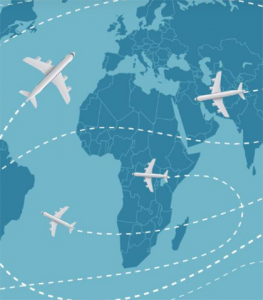COVID reins in global migration – report
The coronavirus pandemic has slowed global migration by nearly 30 percent, with around two million fewer people than predicted migrating between 2019 and 2020, according to a new UN report.
The report, titled ‘International Migration 2020’, found about 281 million people were living outside their country of origin in 2020.
 It shows that two-thirds of registered migrants lived in just 20 countries, with the United States at the top of the list, with 51 million international migrants in 2020.
It shows that two-thirds of registered migrants lived in just 20 countries, with the United States at the top of the list, with 51 million international migrants in 2020.
Next came Germany with 16 million, Saudi Arabia with 13 million, Russia with 12 million and Britain with nine million.
India topped the list of countries with the largest diasporas in 2020, with 18 million Indians living outside their country of birth.
Other countries with a large émigré communities include Mexico and Russia, each with 11 million, China with 10 million and Syria with eight million.
In 2020, the largest number of international migrants resided in Europe, with a total of 87 million.
Nearly half of international migrants resided in the region they came from, with Europe accounting for the largest share of intra-regional migration. Seventy percent of migrants born in Europe live in another European country.
Refugees account for some 12 percent of all international migrants, the report said, with around 80 percent hosted in low- and middle-income countries.
The report found that immigrant populations from countries such as Algeria, Burkina Faso, El Salvador, Guatemala and Mexico tend to concentrate in a single or a few countries of destination.
And many countries have instituted policy measures to encourage investment by their transnational populations. These measures include streamlined bureaucratic procedures to facilitate diaspora investment, tax exemptions or other financial incentives, and preferential treatment in the allotment of permits, licenses or credit.
Migrant women are important agents of change, the report said.
They transform social, cultural and political norms and promote positive social change across households and communities. As migrants, women also contribute to the economic development of their countries of origin and destination. In 2020, just under half of all international migrants worldwide were women or girls. While most migrant women move for labour, education or family reasons, many are forced to leave their countries due to conflict or persecution.
Women and girls also comprised around half of all persons forcibly displaced across national borders in 2020.
The share of international migrants in the total population by age varies greatly across income groups and geographic regions.
In countries where fertility is low or where international migrants represent a large share of the total population, international migrants constitute a larger proportion of all children and adolescents.
In many societies, international migrants also comprise a sizable share of the working-age population (aged 20 to 64). International migrants of working age contribute to easing some of the pressure on public pension systems in countries experiencing population ageing.
However, for a country with a long history of immigration, in which immigrants tend to remain in the destination country through the working ages and after retirement, the average age of the immigrant population may exceed the national average – in part, because the children of immigrants born in the destination country are not counted as migrants.
After the adoption of the 2030 Agenda for Sustainable Development and the Global Compact for Safe, Orderly and Regular Migration, a growing number of countries have focused on providing options for safe, orderly and regular migration, while taking into consideration current and projected national demographic trends and labour market needs.
The report says that a majority of countries grant highly skilled workers preferential treatment, subjecting them to fewer restrictions regarding admission, length of stay, conditions of employment and admission of family members than low-skilled migrants.
Most Governments also allow immigration for family purposes under certain conditions and have developed policies to support family reunification for migrants, consistent with the right to family life and the principle of the best interests of the child. Globally, more than half (54 per cent) of all Governments with available data reported having policies to facilitate orderly, safe, regular and responsible migration, as called for in target 10.7 of the Sustainable Development Goals.
Read the full report here: https://www.un.org/development/desa/pd/news/international-migration-2020












